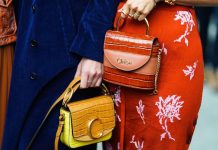Australian fashion has a long history, from the colonial days when it first emerged, largely influenced by British fashion. During the 20th century, Australian fashion developed a sense of identity marked by the Australian climate and aboriginal culture.
In The Land Down Under, the consistent and creative work of fashion icons is how the Australian fashion industry rose to prominence. Although it faced many economic challenges and harsh local criticism, Australian fashion has shown resilience and created a global economic success story.
Today we explore some of the factors that have contributed to Australia’s fashion success.
The Challenging Phase
Unfortunately, Australian fashion faced hardship for several years due to the influx of cheap overseas alternatives within the local market. Nowadays, the influx continues to increase significantly with clothing imports.
Bangladesh, Vietnam, India, and Indonesia are among the top five countries to export fashion to Australia; China was number one, with over 6 billion worth of clothing imports. Consumer behavior and preferences hurdled the progression of the fashion industry; shopping online and sustainable fashion were among the reasons that led to the fall of Australian fashion.
Innovations and Adaptations
Despite the Australian fashion industry’s challenges, several Australian designers took upon the challenge of reinventing local and global fashion. In 1928, Prue Acton was one of the first local talents to begin the fashion movement; her brand was the first to be exported overseas.
Jenny Kee was one of the pioneers who embraced aboriginal designs; she often incorporated eclectic patterns and diverse choices in her ensembles. One of the first Australian designers to be featured in international fashion magazines was Linda Jackson, and her brand was among the most successful fashion brands worldwide in the 1970s and 1980s.
In recent years, Australian fashion has become more ethically oriented and started to move towards sustainability; the movement has led to new practices that reduce the fashion industry’s environmental impact.
Modern brands and designers use recycled materials in their clothing, and some include water conservation in their industry. Apart from focusing on sustainability and ethics, the Australian fashion industry has dedicated its vision to craftsmanship; one of the latest trends is handmade clothing and accessories.
Consumers are mostly drawn to ethical brands that ensure proper equality and diversity while maintaining attention to detail. Dion Lee, also known as the Australian wonder boy, focuses on recycled materials in his designs and is dedicated to ethical manufacturing practices. He is known for his minimalist designs and is building a fashion empire in America.
Government Support and Industry Initiatives
The Australian government has placed several policies to support the Australian fashion industry; nowadays, designers have many funding programs, grants, and incentives encouraging growth and innovation.
The Australian Department of Industry, Science and Resources has launched many funding programs, such as the Fashion Industry Growth Fund and the Fashion Industry Skills Fund. These programs are focused on hedging and finding capital for research and development, skills training, and marketing within the Australian fashion industry.
To help grow the fashion industry, the government offers many tax breaks and rebates. The government aims to help reduce costs and allow designers and local industries to compete with foreign businesses. There are also several initiatives in addition to government policies working to promote and support the fashion industry; most of them include collaborative efforts between fashion schools, industry associations, and local businesses.
One of the local initiatives is the Australian Fashion Council (AFC), a non-profit organization. The AFC launched programs that help the local fashion industry, such as the Fashion Design Council of Australia and the Australian Fashion Institute.
The AFI hosts many fashionable events throughout the year for local designers, such as fashion shows, trade fairs, and conferences. This helps Australian designers and local small businesses to demonstrate their work and connect with potential buyers and partners. One of the AFI events was a partnership with Forbes, “The Forbes 30/50 AFI Fashion Showcase”, which took place in Abu Dhabi.
Global Recognition and Export Opportunities
Luckily, the Australian fashion industry has gained international attention recently because of its innovative approach and incorporation of Slow Fashion, which is an alternative concept to common production and consumption practices in fashion.
Australian designers like Aje, Dion Lee, and Ksubi are now being celebrated on runways worldwide and featured in international fashion magazines. Some of their latest designs use sustainable materials such as recycled plastics, organic cotton, and bamboo, which makes fashion more relatable to sustainability-conscious consumers.
Country Road is a “Made in Australia” label synonymous with quality, uniqueness, and sustainability. Since then, the Australian fashion industry has been increasingly seen as a desirable and ethical choice; for instance, Country Road has been worn by celebrities such as Cate Blanchett and Nicole Kidman.
The Economic Rebirth of Australian Fashion continuous to spread as their innovation and ethical morals continue to raise a new fashionable aesthetic.






























































